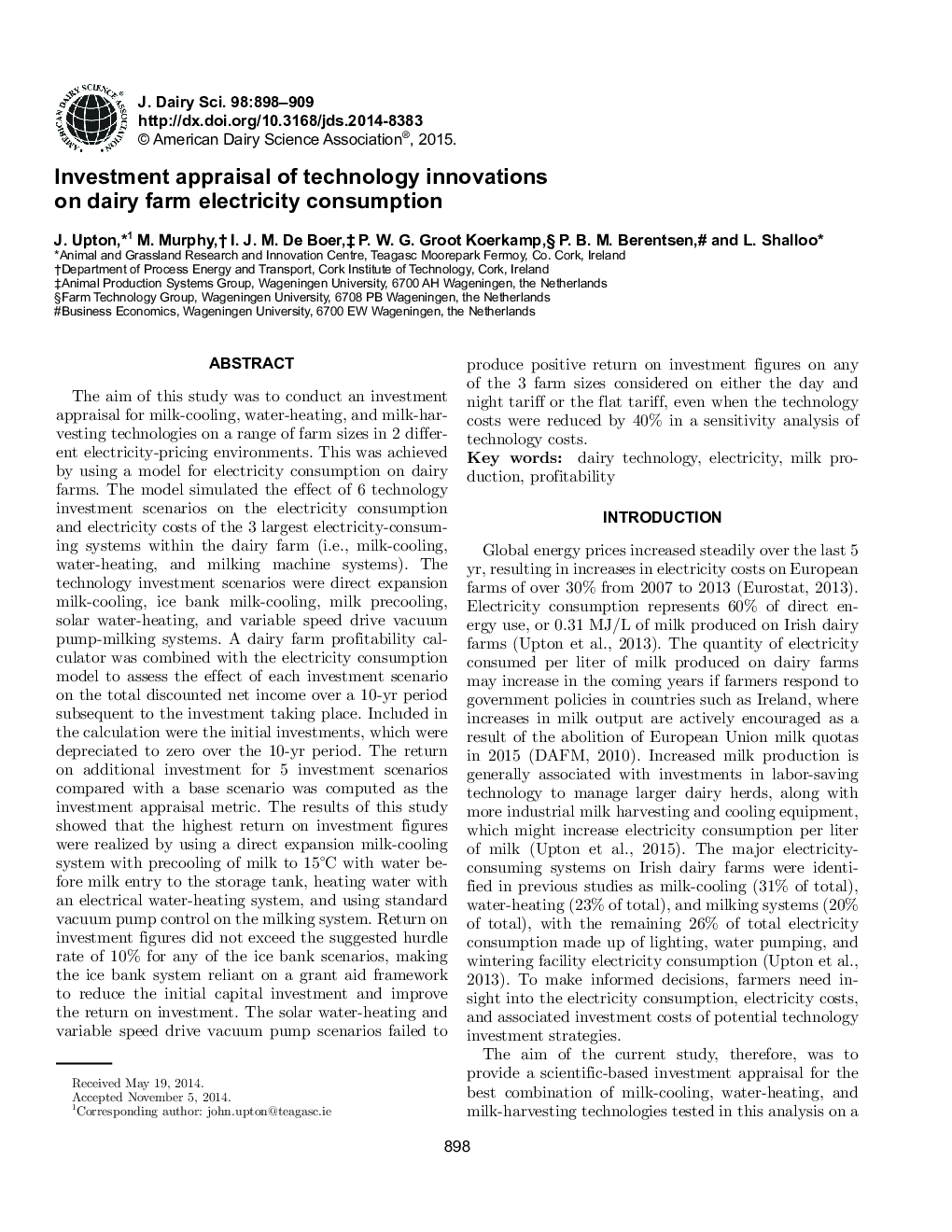| Article ID | Journal | Published Year | Pages | File Type |
|---|---|---|---|---|
| 10975382 | Journal of Dairy Science | 2015 | 12 Pages |
Abstract
The aim of this study was to conduct an investment appraisal for milk-cooling, water-heating, and milk-harvesting technologies on a range of farm sizes in 2 different electricity-pricing environments. This was achieved by using a model for electricity consumption on dairy farms. The model simulated the effect of 6 technology investment scenarios on the electricity consumption and electricity costs of the 3 largest electricity-consuming systems within the dairy farm (i.e., milk-cooling, water-heating, and milking machine systems). The technology investment scenarios were direct expansion milk-cooling, ice bank milk-cooling, milk precooling, solar water-heating, and variable speed drive vacuum pump-milking systems. A dairy farm profitability calculator was combined with the electricity consumption model to assess the effect of each investment scenario on the total discounted net income over a 10-yr period subsequent to the investment taking place. Included in the calculation were the initial investments, which were depreciated to zero over the 10-yr period. The return on additional investment for 5 investment scenarios compared with a base scenario was computed as the investment appraisal metric. The results of this study showed that the highest return on investment figures were realized by using a direct expansion milk-cooling system with precooling of milk to 15°C with water before milk entry to the storage tank, heating water with an electrical water-heating system, and using standard vacuum pump control on the milking system. Return on investment figures did not exceed the suggested hurdle rate of 10% for any of the ice bank scenarios, making the ice bank system reliant on a grant aid framework to reduce the initial capital investment and improve the return on investment. The solar water-heating and variable speed drive vacuum pump scenarios failed to produce positive return on investment figures on any of the 3 farm sizes considered on either the day and night tariff or the flat tariff, even when the technology costs were reduced by 40% in a sensitivity analysis of technology costs.
Related Topics
Life Sciences
Agricultural and Biological Sciences
Animal Science and Zoology
Authors
J. Upton, M. Murphy, I.J.M. De Boer, P.W.G. Groot Koerkamp, P.B.M. Berentsen, L. Shalloo,
